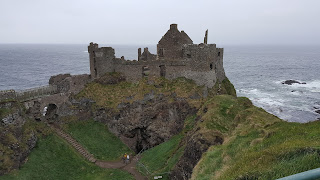There's always a need for another game of Sam Mustafa's excellent
Maurice - and we especially enjoy it with the American Revolution.
This game was loosely based on the action at
Chatterton's Hill from Steve Jones' excellent
Rebellion sourcebook for BP, and yet again highlighted some of the unique advantages with the
Maurice system. There can be chaos in terms of what you can do, though the resource management is very much by choice. For example:
- We had instances here, where on both sides, decisions had to be made with regard to dividing forces, and that meant that the focus had to be placed on one or other flank. In the American case in this scenario, it meant that the commander was stretched, operating on one flank in terms of moving troops to defend against the flank attacked, while also trying to pull reinforcements from the other, while the British player simply pushed the bulk of his force onto the American right, and was able to effectively ignore the left (the 'lethal volley' bonus really helped here in terms of gaining ground on the hill that the Americans held).
- Though you sometimes don't get the card mix you'd prefer, it's the resource management that is the real crux of Maurice - forcing you to focus on where the action needs to be - but of course, there's always too much to do, and there's always a need to keep forces together - even though you can't - and that's where the mechanisms really work. If you get that wrong, especially as the defender, it has real consequences as the attacker eats into your flank.
- Still a great game, and must get some Seven Years War 15mm finished in order to do some earlier battles with more cavalry. (The British cavalry didn't even move here- but then, it didn't need to, which is what we read about in historical accounts, as opposed to what happens in some wargame rules. There needs to be something stronger than a simple activation dice roll as with BP).

The British made their initial crossings from
Wolf Hill across the Bronx Rover. The objective was the road behind the ridgeline. That said, I had never seen an attacker capture an objective in
Maurice yet, without having their morale level reduced to zero. (Today changed that one...)
Well ensconced upon Chatterton's Hill, the Americans had a large amount of Levy & Militia, whose lack of 'Lethal Vollies' (in contrast to the British) would have an effect later.
'Steady Lads. Wait 'til you see the whites of their eyes...' (Actually mate, they're going to do a flanking action...wait for it...)
Things get interesting now. Using the 'that's not on the map' card, an unplanned for marshy area lies smack bang in the midst of the British advance.
So the British & Hessians form column and advance around it (rather too quickly as it turned out). The forced flanking action however, should have given the Americans time to move to their right and reinforce. In the event, the presence of British light troops and cavalry on their left flank stopped them, and they did nothing.
A tense firefight near one of the walled areas near the river, as the Allies cross.
'Don't worry none Zeke. Every time this here
Duc guy is in charge of us Yanks, we always win.'
(Don't speak too soon mate...)
Masses of British and Hessians approach the American right, and there are far too few Continentals to defend.
Two Continental regiments manage to make it to the flank, but are shot away with intense and supported musketry.
'Need you to move to the other flank boys...!'
More American columns move just in time to see militia smashed by elite troops.
Objectives captured, morale broken. It was over for the Americans before they could get enough Continentals into position.
'Well maybe I was wrong about this guy Zeke...I think the British are comin' '
(Remaining unused, the British cavalry successfully guarded the Action Card deck.)




















































